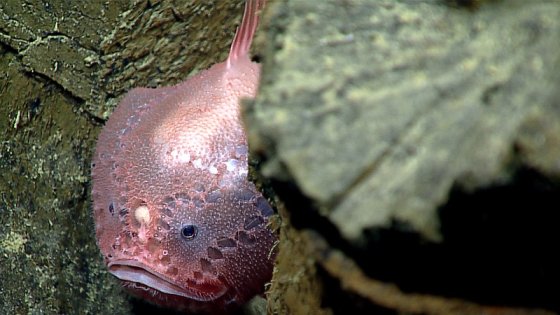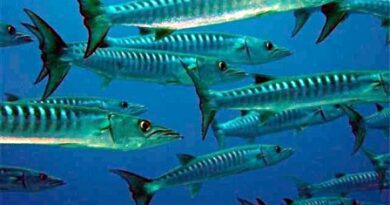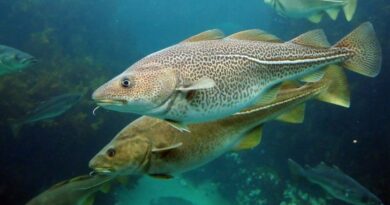Anglerfish
Anglerfishes are specialised marine fish that can be found in all oceans, from shallow waters to deep trenches. The Lophioidea, Antennarioidea, and Ceratioidea are the three groups. The anglerfish’s greatest distinguishing trait is that the first ray of its dorsal fin is usually lengthy and has a lure at its tip, which it uses to “angle” for its food. Furthermore, several species’ pectoral fins are carried on fleshy arms, giving them an odd appearance.
The Lophioidea are big shallow-water fish that can reach a length of 4 feet (120 cm). Lophius piscatorius, or fishing frog, is a common anglerfish found throughout the European and American shores. It has been significantly flattened and is now sitting on the seabed like a gigantic disc. The jaws are lined with sharp, needle-like teeth, and the mouth is massive. The eyes are on the top of the head, and the brown body is fringed with little flaps of skin to break up the outline and make the fish less noticeable. Anglerfish eggs are enclosed in a lengthy ribbon of mucus that can be 1-3 ft (30–90 cm) wide and up to 50 ft (16 m) long and is frequently seen floating at the surface.
Two significant families make up the Antennarioidea. From side to side, the Antennariidae are flattened. Histriospp, the Sargassum weed fish, is one of the most well-known members. The Ogcocephalidae, sometimes known as the batfish, is the second family. They have huge heads and small bodies and are flattened like lophioids. The limb-like pectoral fins, which are muscular and utilised to crawl across the bottom with a slow, purposeful waddle, are the most distinctive feature. When the fish is hungry, the lure is hidden in a tube above the mouth and can be propelled out. Batfishes are found in both the Atlantic and Pacific Oceans and grow to be around 15 inches (38 cm) long.
The Ceratioidea, sometimes known as deep-sea fishermen, are deep-sea midwater fish. The body is rounded rather than flattened, yet the fishing lure is present. Ceratias holboelli is a 36-inch-tall species of Ceratias (90 cm). The majority of ceratioids, on the other hand, are barely a few inches long. They’re dark brown or black in colour, without scales, and have a delicate, velvety skin, yet some have warty projections on their bodies. The lure has a luminous quality about it. Deep-sea anglerfish males are parasitic on females. CLASS: Pisces, ORDER: Lophiiformes.



